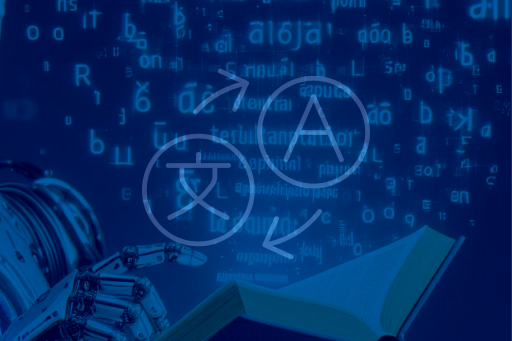
The AI translation market is experiencing remarkable growth. It is projected to reach USD 5.72 billion by the end of 2030. The implementation of machine learning and natural language processing has substantially improved the accuracy and fluency of machine translations. This has led to a surge in the adoption of AI translation solutions across various industries, transforming how businesses approach multilingual communication. As we learn more about this topic, we will explore the factors driving this rapid growth, the benefits of AI in translation, and what we can expect for the future of the industry.
The integration of AI technologies in the translation sector has gained significant momentum. Valued at USD 2.17 billion in 2023, it is projected to reach USD 5.72 billion by the end of 2030, growing at a compound annual growth rate (CAGR) of 17.2% during the forecast period from 2024 to 2030. This expansion is largely driven by the increasing demand for real-time translation services, particularly in travel, hospitality, and e-commerce. These industries require instant multilingual communication to serve diverse customer bases effectively.
Verified Market Research reports that the need for multilingual content and localization services is a significant driver for this growth. The AI translation market includes a variety of applications, from localizing content for international audiences to providing real-time language translation in communication tools. AI’s ability to handle large volumes of data and provide quick translations has made it an indispensable tool in the global market, allowing businesses to interact seamlessly with audiences worldwide.
Several key factors are propelling the growth of AI translation services. One significant driver is the rapid advancement in speech technologies. According to Slator, speech technologies have seen significant advances in quality over the past few years, along with lowered costs and barriers to entry. This progress has been boosted by the release of several speech-based large language models (LLMs). As of 2023, AI speech translation has been implemented into several remote simultaneous interpretation (RSI) platforms, finding applications in real-world scenarios. Providers of AI speech translation are currently positioning this offering not as a replacement for human interpreters but as an additional option. This can be used depending on event type, budget, and time factors, expanding and augmenting the global reach of business and institutional meetings, conferences, and events.
Moreover, advancements in neural machine translation (NMT) algorithms have significantly enhanced the accuracy and fluency of translations. AI systems now utilize large datasets and complex algorithms to understand linguistic nuances, producing increasingly accurate translations. This technological evolution has made AI-powered translations more reliable and appealing to businesses seeking efficient communication solutions.
The integration of AI with existing translation tools has also played a crucial role in driving growth. AI enhances the capabilities of these tools, improving efficiency and scalability to meet the growing demand for multilingual communication solutions. Additionally, the collaboration between AI and human expertise ensures that translations not only convey the intended meaning but also capture cultural nuances and context.
Despite the impressive advancements in AI translation, the human element remains vital. AI systems, while highly efficient, can inadvertently perpetuate biases present in the vast datasets they are trained on. This can lead to biased decisions, particularly in sensitive areas such as ethnicity, gender, or socioeconomic status. To address these challenges, it is crucial to humanize AI, ensuring that these technologies benefit society fairly and equitably.
In our article “Why Humanizing AI is Key” we discussed how addressing diversity and bias in AI development can lead to more representative, sensitive, and responsible systems. This humanization process is essential for creating AI technologies that enhance human experiences and improve lives. By combining AI’s computational power with human insight, we can achieve translations that are not only accurate but also culturally and contextually appropriate.
As we look ahead to 2024, several trends are expected to shape the translation industry, driven by AI’s continued evolution. These trends include advancements in neural machine translation, the rise of real-time translation services, shifts in language demand, the growing need for specialized translations, and redefining translation accessibility.
As we look ahead to 2024, the translation industry is on the cusp of significant transformation, driven by advancements in AI technology. The rapid evolution of neural machine translation, the expansion of real-time translation services, and shifts in language demand are set to redefine the landscape. AI’s increasing role in specialized translations and its ability to make digital content globally accessible highlights the profound impact it will have on communication across languages and cultures.
These trends emphasize the need for the industry to adapt and innovate continuously. Embracing AI advancements while integrating human expertise will be crucial in navigating this dynamic environment. The future of translation lies in the symbiotic relationship between AI’s efficiency and human oversight, ensuring translations are accurate, culturally, and contextually relevant.
2024 promises to be a year of remarkable growth and change for the translation sector. By staying attuned to these trends and leveraging the latest AI technologies, the industry can look forward to a future where language barriers are increasingly diminished, fostering greater global connectivity and understanding.
207 E. 5th Ave.
Suite 248
Eugene, OR, 97401
United States
+1 800 606 0516
info.usa@goglobal-consulting.com
C. José Ortega y Gasset, 22-24
Planta 5
Salamanca, 28006
Madrid, Spain
+34 900 433 054
info.spain@goglobal-consulting.com
Esmeralda 1061
Piso 2, Oficina 4
Buenos Aires, C1007
Argentina
+54 11 5279 9097
info@goglobal-consulting.com
4457 Des Grandes Prairies.
Suite 205.
Montreal, Quebec, H1R 1A5
Canada
+1 800 606 0516
info@goglobal-consulting.com
Go Global is your multilingual content partner in the tech-driven era. We offer content creation, translation, localization, interpretation, data and consulting services for any media and project scope.
Our offices are located in Argentina, United States, Canada and Spain. We offer global coverage 24 hours/all year round.
Copyright © Go Global 2021. All rights reserved.